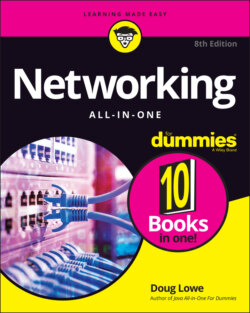Читать книгу Networking All-in-One For Dummies - Lowe Doug, Doug Lowe - Страница 127
The presentation layer
ОглавлениеThe presentation layer is responsible for how data is represented to applications. The most common representation for representing character data today is called UTF-8, which uses 8-bit sets to represent most characters found in western alphabets. UTF-8 is compatible with an older standard called ASCII.
UTF-8 is sometimes called Unicode, which is a standard for representing the characters found in most of the world's writing systems. Technically, UTF-8 is a particular method of implementing Unicode, so although the two terms are related, they are not identical.
Some computers, in particular IBM mainframe computers, use a different code called Extended Binary Coded Decimal Interchange Code (EBCDIC). ASCII and EBCDIC aren’t compatible. To exchange information between a mainframe computer and a Windows computer, the presentation layer must convert the data from ASCII to EBCDIC, and vice versa.
Besides simply converting data from one code to another, the presentation layer can also apply sophisticated compression techniques so that fewer bytes of data are required to represent the information when it’s sent over the network. At the other end of the transmission, the presentation layer then decompresses the data.
The presentation layer can also scramble the data before it’s transmitted and then unscramble it at the other end by using a sophisticated encryption technique that even Sherlock Holmes would have trouble breaking.
